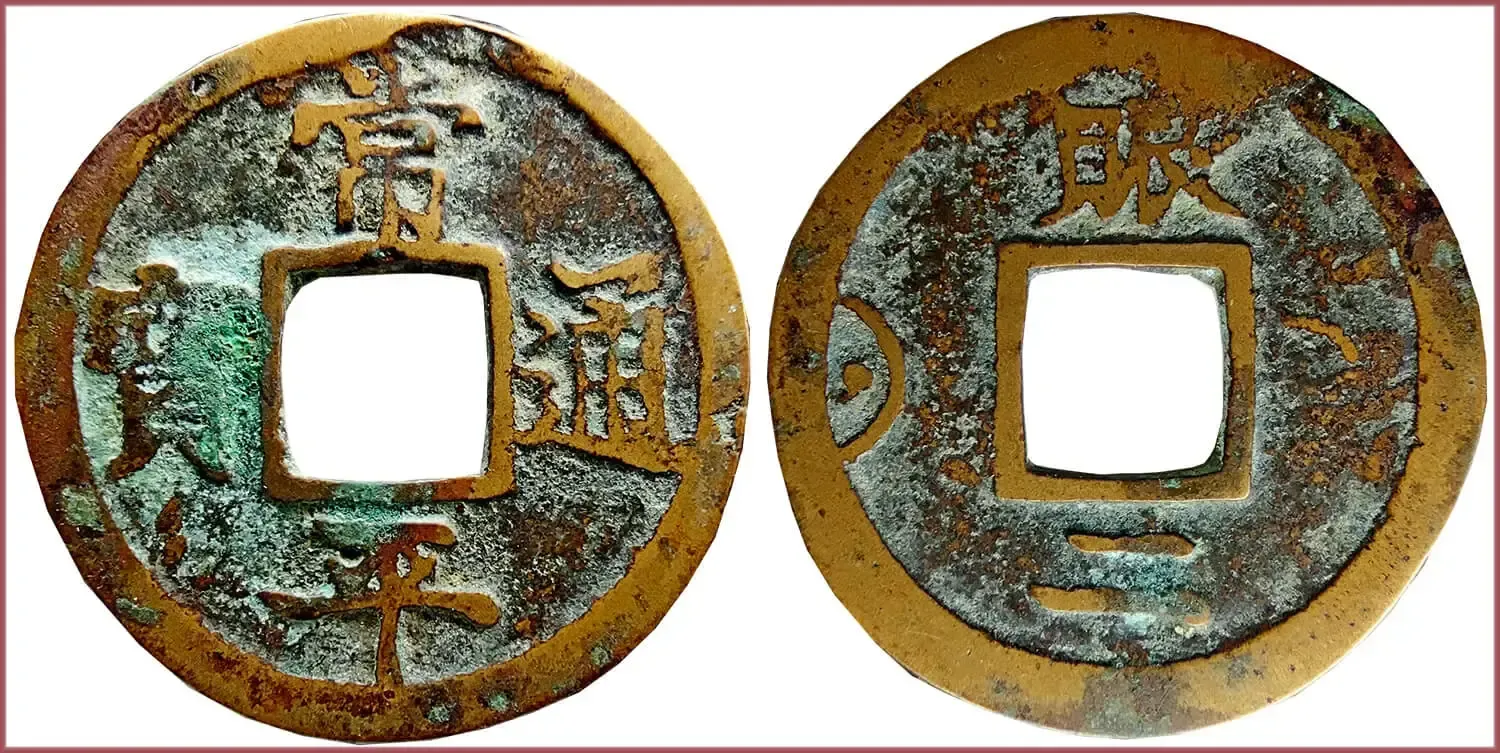MUN: COIN OF KOREA
2 mun, 1742-1752: Great Joseon (Korea)
Great Joseon — Korean dynasty and state that existed on the territory of the Korean Peninsula during 1392-1897. The Great Joseon empire emerged as a result of the overthrow of the pro-Mongol Goryeo dynasty by representatives of the pro-Chinese opposition. Joseon had a land border with the Ming Chinese Empire in the north, and a sea border with Japan in the south. At the end of the 19th century, Japanese pressure intensified. The last ruler of Joseon tried to preserve the state and carry out reforms; implementing them, changed the name of the country to the Korean Empire in 1897. However, this did not help. Korea was finally annexed by Japan in 1910.
The legend on the obverse of the coin is read from top to bottom and from right to left (crosswise).
常平: Sang pyong (Department of Social Assistance and Protection of Korea [some numismatic sources list the issuer as Seoul Charity Office] — the name of one of the Seoul Mints that issued the mun coin).
通寶: Tongbo (the term literally means "currency").
賑: mintmark.
二: 2 (the serial number of the coin series is probably indicated).
Dot in crescent at left.
A coin with a square hole in the center. Made by casting method.
- Copper: 30 mm - 5.2 g
- Reference price: 13.5$
COIN MUN — WHERE & WHEN (coins catalog: by names & emitents)
- KINGDOM OF JOSEON (1633-1892): mun
MUN as coin name.
Mun — extremely widespread historical coin, which during 1633-1892 served as the main monetary unit of Korea (the state that existed before the breakup into two modern states — the Republic of Korea and the Democratic People's Republic of Korea). In addition to mun, no other coins were minted during the specified period: neither of higher denominations, nor of lower denominations.
In fact, there is information that a Korean coin of this denomination was issued even earlier (approximately from the 11th century). However, the peak of popularity fell precisely in this period, and earlier emissions are not considered by all sources to be mun.
During the entire history of use (which is more than 250 years) the Korean mun has practically not undergone significant transformations. Invariably, the coin was made by casting from copper, bronze or brass. Traditionally, no date was specified. During the 17th-18th centuries coins with denominations of 1 and 2 mun were minted, while in the 19th century instead of 2 mun, 5 mun coins were issued.
As for the design, it has practically not been changed for more than two centuries — an untrained numismatist cannot distinguish the mun of the first issues from the last ones. A common feature for all Korean coins of this denomination is a square hole in the center (for ease of transportation and storage of coins).
According to the data of specialized numismatic catalogs, several institutions were involved in the emission of Korean mun coins: Ministry of Defense, Charity Office, General Military Office, Armaments Bureau...
As for the name of the Korean coin mun, we can safely say that its etymology is similar to the names of the Chinese cash (qian), as well as the Japanese mon: each of the mentioned coins was marked with the same Chinese character "文" and had a rectangular hole in the center.











